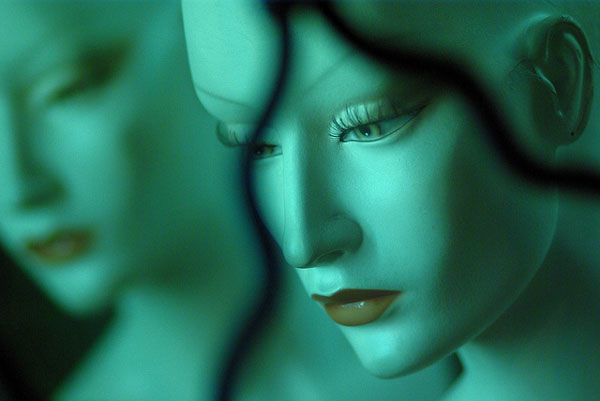The pursuit of beauty comes to this. Selecting
a wig color that will best match your eyebrows.
Code gender as a form of hypertext. Insert
any parenthetical equation. Insert a goldfinch.
Improvise the feminine. Improvise woman.
Improvise the swinging pony tail
of a long-legged lass on a spring morn.
The last child on earth to ever taste honey
will be born in Haigler, Nebraska. Irate apiaries
sell bees wax on the internet. (Actually,
it is paraffin. Actually, it is melted crayon.)
When they cut open the belly of Martha
the passenger pigeon, they found the stingers
of ten thousand honeybees. Some women
replace the hair along their brow with hummingbird
wings. Others choreograph new follicles
from elevator music. A woman does the best she can.
That part about losing fifty percent of your body heat
through your scalp is not true. Dog hair sprinkled
around your cabbage will scare away whitetails.
In the deer beds, she found tufts of deer pelt and bones.
Naturalists now know that deer eat fledgling birds.
No one knows how many hummingbirds can be
found in the bellies of whitetail deer.
Dioscorides, the Greek physician, prescribed
onion to halt balding. Mash one onion
with honey and apply to the scalp before bed.
You will dream of tears and weeping. You will
wake with a wet pillow. Your tears will not
wash away the baldness, but practice
will make sorrow or loss easier to bear.
One kilogram of hair in South India goes for $250.
Merchants ship washed strands to America
in steel containers. In Omaha, a woman
wears the hair of a woman from Mysore.
The hair whispers Hindi love songs.
The American thinks she hears the wind or,
maybe, a hummingbird’s wings.
Click here to read Janice N. Harrington on the writing of this poem:
Image: ” Pretended Indifference ” by Mihaly Borbely, licensed under CC BY 2.0
- Female Pattern Balding - June 3, 2018


